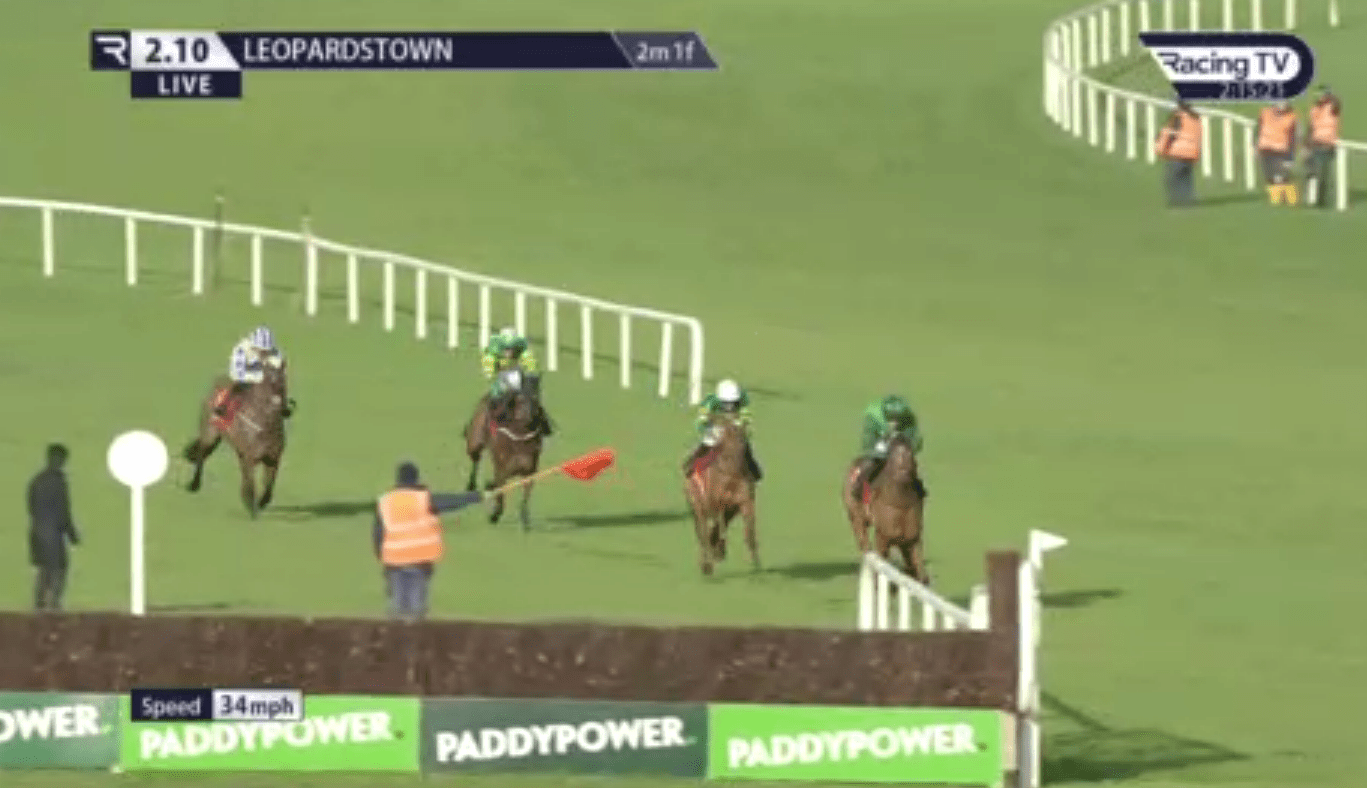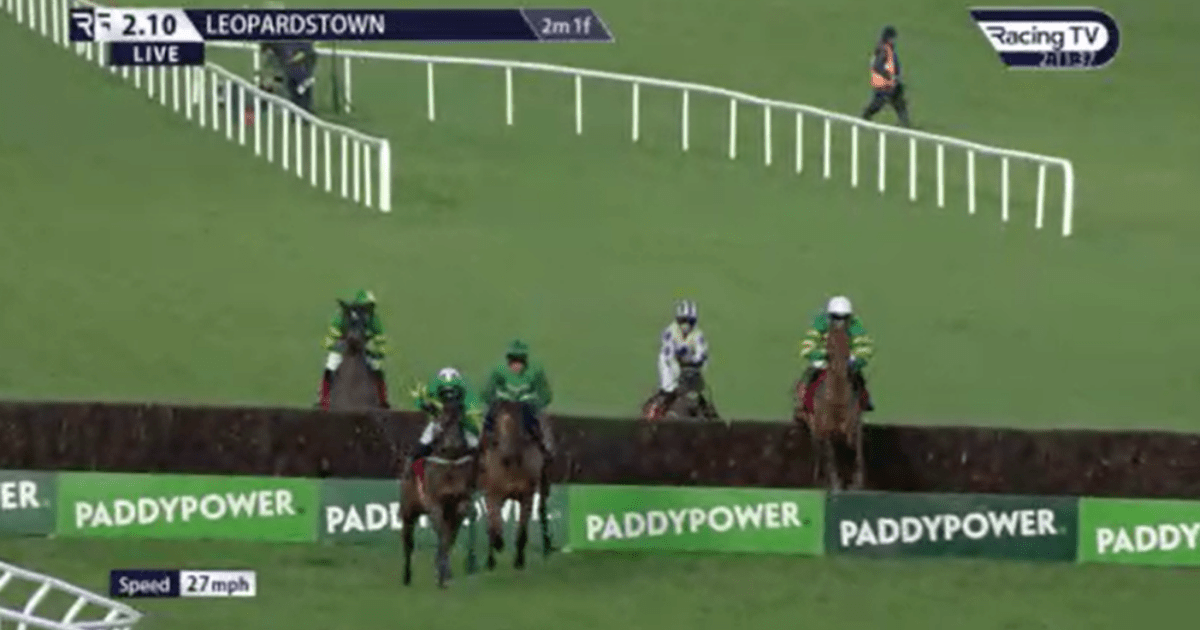Punters Left Confused as Last Fence Is Omitted Due to Sunlight
During the Dublin Chase at Leopardstown, punters were left scratching their heads as stewards made the rare mid-race decision to omit the final fence. The decision was made due to the "sun getting worse," according to the clerk of the course. While it is not uncommon for obstacles to be omitted in races, this is usually due to damage. The last-minute omission left spectators and commentator Jerry Hannon surprised, as the fence had been deemed safe just four minutes earlier.
Disappointment Among Punters
The unexpected omission of the last fence left punters confused and frustrated. Many took to social media to express their disappointment, with one commenter stating, "That’s the first time I’ve seen that happen." Another called it an "absolute shambles" and questioned how a fence could be safe to jump on the first circuit but not two minutes later. Some spectators even left the event early, feeling that the excitement of the races was diminished by the missing obstacle.
Stewards' Explanation
The Irish Horseracing Regulatory Board (IHRB) addressed the situation in their stewards' report. Clerk of the course Lorcan Wyer made the decision to omit the last fence due to the sun "steadily getting worse" throughout the race. Fortunately, the late call did not impact the final outcome of the race.
El Fabiolo Shines in Dublin Chase
Despite the confusion surrounding the omitted fence, Willie Mullins' star 2m chaser El Fabiolo delivered an impressive performance. With this victory, El Fabiolo is now the favorite at 4-9 for the Champion Chase at the upcoming Cheltenham Festival. Nicky Henderson's Jonbon is expected to be the main challenger, but El Fabiolo has already proven his dominance over him in last year's Arkle. Mullins had an exceptional weekend, with his horses securing eight Grade 1 victories, including Galopin Des Champs' thrilling triumph in the Paddy Power Irish Gold Cup.

Frequently Asked Questions
Are there different types horse races in Britain?
There are many different types of horse racing in the UK. They fall primarily under the categories of Flat Racing and National Hunt (or Jump) racing. Flat racing is held over flat tracks that range from 5 furlongs up to 2 miles. National Hunt racing emphasizes horse speed and jumping abilities, with races such as steeplechases containing a series obstacles. There are variations within these two broad categories such as handicaps and maidens races. Each has its own entry criteria and rules.
What are Britain’s most prestigious races for horses?
The United Kingdom has several horse racing events which are acclaimed worldwide. The Epsom Derby is the most prestigious event, followed by the Grand National, Aintree’s Grand National, and Royal Ascot. These events, which showcase the best of equine ability and provide rich tradition as well as history, have also become social occasions. There are even dress codes for these events and they receive royal patronage.
What are the ‘Classics” in UK horseracing?
In UK horse racing, ‘Classics” refers to five prestigious races considered to be the highest-ranking contests for thoroughbreds aged three years. The 2,000 Guineas (also known as the 1,000 Guineas), The Epsom Derby (also called The Epsom Oaks), and The St. Leger Stakes make up this series. It is an impressive achievement to win one of these Classics. To win all three races for a particular gender (either The Triple Crown for colts or The Triple Crown For fillies) is also a historic feat.
How are horses and their riders kept safe during a racing event?
The safety of both horses and riders is of paramount importance in UK horse racing. The UK has strict regulations to ensure that all racecourses are up to safety standards. Horses receive health checks prior to and after races. Jocks are also required to wear protective gear like helmets and body guards. A rapid response team and veterinarians are on call to respond quickly and effectively in the event of an incident.
Can you explain what the ‘Going’ is in horse racing?
The surface of a track is described as “going” on the morning of a racing event. It can have a significant impact on the performance of horses and the outcome. The ‘Going,’ which is the surface, can be anything from very wet and soft to hard and dry. There are a number of gradations between the two, such as good to soft and good to hard. Trainers, jockeys and owners must consider ‘Going’ when selecting racing equipment or strategies.
How can I read a racecard easily?
Reading a racecard is crucial for understanding the key information about a race and the horses running in it. A racecard lists the following details: the horse’s age, weight, trainer, jockeys, past form figures, and the color of silks worn by jockeys. By learning how to interpret these data, you can better gauge each horse’s chances. Many betting services and racecourses offer guides for reading racecards to their customers.
Statistics
- There are over 8,000 active racehorse owners in the UK, ranging from royals to common citizens.
- Horse racing contributes an estimated £3.7 billion to the UK economy directly and indirectly each year.
- In the UK, more than 14,000 people are employed directly in the horse racing industry.
- The annual Cheltenham Festival has an economic impact of over £100 million for the local Gloucestershire economy.
- British racing oversees around 1,500 fixtures annually across its 59 racecourses.
- The Grand National at Aintree boasts a prize fund of around £1 million, making it the most valuable jump race in Europe.
External Links
thejockeyclub.co.uk
britishhorseracing.com
britishhorseracingmuseum.org.uk
betfair.com
thejockeyclub.co.uk
thejockeyclub.co.uk
How To
How to understand horse racing odds
It is important to understand horse racing odds in order to make informed bets. Probability of a specific outcome is represented by odds, which determines potential winnings. In the UK, odds have traditionally been displayed as fractions. For example, 5/1 means that, for every PS1 bet, the winner could earn PS5. Consider that odds can reflect the bookmaker’s view of the chances of a particular horse, which is influenced by conditions, market sentiment and form. Multiply your bet by the numerator, or top number. Then add the original stake in order to calculate the potential payout.

